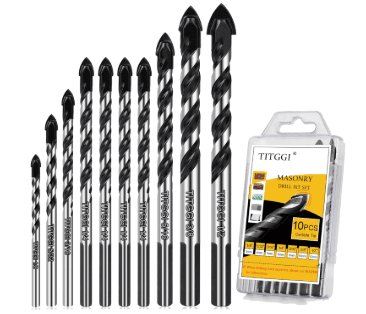Short Answer – 18V vs 20V drill: drills are often used interchangeably, but the difference is mostly marketing rather than true performance. Both use lithium-ion batteries and can deliver similar torque and runtime, depending on the brand and battery capacity. Choosing between them depends on your project needs, battery ecosystem, and tool features rather than nominal voltage alone.
Understanding 18V and 20V Drills
Many users assume that 20V drills are inherently more powerful than 18V, but in reality, both typically use 18V lithium-ion cells. The “20V” label represents the maximum charge voltage, while 18V is the nominal voltage. In practical use, performance is almost identical. Both are capable of handling standard drilling, driving, and light masonry or woodwork tasks.
The main differences arise from brand ecosystems, battery design, and marketing. Some manufacturers advertise 20V tools to appear more powerful, but the effective energy output is nearly the same as an 18V drill. Understanding this helps avoid confusion when buying tools or batteries.
3 Top 20V Cordless Drills for Power, Performance, and Reliability
1. DEWALT 20V MAX Cordless Drill and Impact Driver
The DEWALT DCK240C2 is a cordless drill and impact driver combo designed for DIY enthusiasts and professionals who need versatile tools for drilling, driving, and light construction tasks. The kit includes two 20V MAX batteries, a charger, and a carrying bag, making it ready for immediate use.
Key Features – DEWALT DCK240C2
- Includes drill and impact driver for versatile applications
- Two 20V MAX lithium-ion batteries for extended runtime
- Variable speed control for precise drilling and driving
- 1/2-inch drill chuck and 1/4-inch impact driver chuck
- Compact and ergonomic design for comfortable use
- LED lights to illuminate work areas
- Carrying bag for convenient storage and portability
Pros
- Combo kit provides two essential tools in one purchase
- Long battery life with two included packs
- Comfortable grip and lightweight design
- LED lights improve visibility in dim spaces
Cons
- Slightly bulky compared to single-tool kits
- Batteries may need extra charges for extended heavy-duty use
- Higher price compared to basic drill kits
Final Verdict
The DEWALT DCK240C2 is an excellent choice for both beginners and professionals who need a reliable cordless drill and impact driver. Its two included batteries ensure extended work sessions without downtime, while the compact design and ergonomic grip provide comfort during prolonged use.
The kit is versatile enough for general drilling, driving, and light construction projects, making it a convenient all-in-one solution. While it is slightly bulkier than single-tool options, the combination of tools, batteries, and storage bag delivers great value and usability for any toolkit.
2. AVID POWER 20V MAX Lithium lon Cordless Drill Set
The AVID POWER 20V MAX cordless drill set is designed for DIYers who want a complete drilling kit for home projects. It comes with a battery, charger, 22-piece bit set, and a 3/8-inch keyless chuck for easy bit changes.
Key Features – AVID POWER 20V MAX
- 20V MAX lithium-ion battery for extended runtime
- 3/8-inch keyless chuck for fast and simple bit changes
- Variable speed control for different materials
- 16 torque settings for precise driving
- Includes 22-piece bit set for versatility
- Lightweight and ergonomic design
- Compact and easy to store
Pros
- Comprehensive kit includes battery, charger, and bits
- Adjustable torque settings for precise work
- Comfortable for extended use
- Lightweight and portable
Cons
- Battery runtime may be shorter for heavy-duty tasks
- Not as powerful as professional-grade drills
- Pink color may not appeal to all users
Final Verdict
The AVID POWER 20V MAX cordless drill set is ideal for DIYers seeking a complete, versatile, and lightweight kit. Its 16 torque settings and variable speed control allow for precise drilling and driving across different materials. While not designed for heavy professional work, it is perfect for home projects, furniture assembly, and general repairs. The included battery, charger, and 22-piece bit set provide convenience and value, making it an excellent choice for anyone building a basic yet capable toolkit.
3. CRAFTSMAN V20 Cordless Drill/Driver Kit
The CRAFTSMAN CMCD700C1 V20 cordless drill/driver is designed for homeowners and DIY enthusiasts who need a reliable tool for drilling and driving. The kit includes a 20V battery and charger, making it ready for immediate use on a variety of tasks.
Key Features – CRAFTSMAN CMCD700C1
- 20V V20 lithium-ion battery for consistent power
- 1/2-inch keyless chuck for easy bit changes
- Variable speed control for precision drilling
- Lightweight and ergonomic design
- LED work light to illuminate dark areas
- Compact and portable for easy handling
- Includes battery and charger for immediate use
Pros
- Reliable and durable for general DIY tasks
- Compact and easy to maneuver
- LED light improves visibility
- Simple operation for beginners
Cons
- Limited torque for heavy-duty construction
- Single battery included may require additional purchases for extended use
- Not ideal for professional-grade applications
Final Verdict
The CRAFTSMAN CMCD700C1 V20 drill/driver is a solid choice for homeowners and DIY enthusiasts who need a dependable cordless tool. Its lightweight and ergonomic design makes it comfortable for extended use, and the included LED light enhances visibility in tight spaces. While it is not designed for heavy professional work, it performs well for drilling, driving, and general household projects. The included battery and charger allow immediate use, making it a convenient and reliable option for anyone building or maintaining a basic toolkit.
3 Top 18V Cordless Drills for Power, Performance, and Reliability
1. Cordless Drill/Driver, Bare, 18.0V, 1/2in
The 18V Cordless Drill/Driver Model 2606-20 is designed for DIY enthusiasts and homeowners who need a reliable drill for everyday tasks. This tool-only model allows users to integrate it into their existing 18V battery system or purchase a compatible battery separately.
Key Features – Model 2606-20
- 18V lithium-ion battery compatible (sold separately)
- 1/2-inch keyless chuck for easy bit changes
- Compact and lightweight design for comfortable handling
- Variable speed trigger for precise control
- Ergonomic handle reduces hand fatigue
- LED light to illuminate work areas
- Durable construction for general DIY projects
Pros
- Lightweight and easy to maneuver
- LED light improves visibility in tight spaces
- Keyless chuck simplifies bit changes
- Suitable for a wide range of home projects
Cons
- Battery not included, sold separately
- Limited torque for heavy-duty applications
- Not ideal for professional use requiring extended runtime
Final Verdict
The Model 2606-20 is a versatile and lightweight 18V drill/driver ideal for general household and DIY tasks. Its compact design and LED light make it easy to work in confined or dim areas. While the absence of a battery may be inconvenient for some users, those with existing 18V tools can easily integrate it into their system. This drill offers sufficient power and comfort for everyday drilling and driving tasks, making it a practical addition to any home workshop.
2. RYOBI ONE 18V Cordless 1/2 in. Drill/Driver
The RYOBI ONE+ PCL206B is a cordless 18V drill/driver built for homeowners and DIY enthusiasts who want compatibility with the RYOBI ONE+ battery system. The tool-only model allows flexibility for users who already own ONE+ batteries.
Key Features – RYOBI PCL206B
- 18V lithium-ion battery compatible with RYOBI ONE+ system
- 1/2-inch keyless chuck for fast bit changes
- Variable speed trigger for precision control
- Compact and ergonomic design for comfortable use
- Lightweight for reduced hand fatigue
- LED light to illuminate work areas
- Durable construction for everyday tasks
Pros
- Compatible with RYOBI ONE+ battery system
- Lightweight and easy to handle
- LED light enhances visibility in tight spaces
- Keyless chuck allows quick bit swaps
Cons
- Battery not included
- Limited torque for heavy-duty drilling
- May not be suitable for professional construction tasks
Final Verdict
The RYOBI ONE+ PCL206B is a reliable 18V drill/driver ideal for DIY projects and general household use. Its compatibility with the RYOBI ONE+ system adds convenience for users who already own compatible batteries. Lightweight and ergonomic, it is comfortable for extended use, and the LED light improves precision in low-light conditions. While torque is moderate and heavy-duty projects may require more powerful tools, this drill is an excellent option for home users seeking an affordable, flexible, and dependable cordless drill.
3. Makita XFD10Z 18V LXT Lithium-Ion Cordless Driver-Drill
The Makita XFD10Z is a professional-grade 18V cordless driver-drill for users who need a reliable, high-performance tool for drilling and driving tasks. This tool-only model fits Makita’s 18V LXT battery system, providing flexibility for users who already own Makita batteries.
Key Features – Makita XFD10Z
- 18V LXT lithium-ion battery compatible (sold separately)
- 1/2-inch keyless chuck for easy bit changes
- Compact and ergonomic design for comfortable handling
- Variable 2-speed transmission for versatile performance
- Built-in LED light to illuminate work areas
- Durable construction for long-term use
- Lightweight design reduces fatigue
Pros
- High-quality construction for durability
- Compact and comfortable for prolonged use
- LED work light enhances visibility
- 2-speed settings for versatile applications
Cons
- Battery not included
- Moderate torque may not be suitable for heavy masonry
- Tool-only package requires separate battery purchase
Final Verdict
The Makita XFD10Z is a dependable 18V drill/driver suitable for both DIY enthusiasts and professional users who need a compact, versatile tool. Its ergonomic design, lightweight build, and built-in LED light make it convenient for prolonged use and tight spaces.
While a battery is not included, compatibility with Makita’s LXT battery system allows flexibility for existing users. With durable construction and variable speed options, this drill provides consistent performance for drilling and driving tasks in wood, metal, and plastic, making it a reliable choice for a variety of projects.
Performance Considerations: 18V Vs 20V Drill
Torque and Speed
Both 18V and 20V drills offer similar torque, suitable for most DIY and construction tasks. High-end models may include brushless motors and multiple speed settings, improving performance and efficiency. For heavier-duty applications, always check the tool’s maximum torque rating and RPM rather than relying solely on voltage labels.
Battery Capacity
Performance differences are often influenced by amp-hours (Ah) rather than voltage. A higher Ah battery provides longer runtime and more consistent power under load. For example, an 18V drill with a 5Ah battery can outperform a 20V drill with a 2Ah battery in extended tasks.
Weight and Ergonomics
18V drills are typically slightly lighter because some 20V-labeled tools include electronics to support the higher maximum voltage. Ergonomic design, handle comfort, and weight distribution often matter more for long-term usability than the nominal voltage.
Use Cases for 18V vs 20V Drill
Home and DIY Projects
For occasional home use, both 18V and 20V drills are excellent choices. They can handle furniture assembly, cabinet installation, and general maintenance. The difference in voltage is negligible for these light-to-medium tasks.
Construction and Professional Use
Professionals may prefer specific brands within either voltage system to maintain battery compatibility across tools. Some 20V-labeled tools offer high torque, brushless motors, or advanced electronics that make them more reliable for extended or intensive use.
Heavy-Duty Drilling
When drilling into concrete, masonry, or thick hardwood, look at torque ratings, brushless technology, and battery amp-hour rather than just the voltage label. Both 18V and 20V systems can handle medium-duty drilling, but extreme jobs may require corded tools or high-torque rotary hammers.
Key Features to Compare: 18V and 20V Drills
Motor Type
Brushless motors improve efficiency, reduce heat, and extend battery life. Both 18V and 20V drills can feature brushless or brushed motors, but brushless models tend to perform better regardless of voltage.
Chuck Size
Most drills in this category use a 1/2-inch chuck, which accommodates standard drill and driver bits. Ensure the chuck is sturdy and can handle repeated torque applications without loosening.
Variable Speed and Torque Settings
Adjustable speed and clutch settings allow better control over different materials. Both 18V and 20V drills offer these features in modern designs, which is more important than voltage for precision work.
Battery System and Compatibility
Consider the tool ecosystem. If you already have other 18V or 20V tools from the same brand, staying within the same battery system can save money and provide convenience.
LED Lights and Ergonomics
Built-in LED lights improve visibility in tight or dim spaces. Handle design, grip material, and weight distribution affect comfort during prolonged use.
Pros and Cons of 18V and 20V Drills
Pros
- Both provide adequate power for general and medium-duty drilling
- Lithium-ion batteries ensure consistent performance and longer lifespan
- Cordless design allows mobility without power outlets
- Wide availability of accessories and replacement batteries
- Many models include brushless motors and ergonomic designs
Cons
- Voltage labeling can be misleading for inexperienced buyers
- Heavy or extended use may cause fatigue if ergonomics are poor
- Runtime depends on battery capacity more than nominal voltage
- Extreme tasks may require higher torque tools or corded options
Tips for Choosing Between 18V and 20V Drills
Focus on Battery Capacity
A higher amp-hour (Ah) battery provides longer runtime and more stable performance. Don’t focus solely on voltage. Consider also the type of battery, lithium-ion batteries hold charge longer, charge faster, and maintain power more consistently under load. For extended projects, having spare batteries with higher Ah ensures uninterrupted work.
Check Motor Type
Brushless motors are more efficient, generate less heat, and have a longer lifespan compared to brushed motors. They also deliver smoother power for drilling into tough materials. If you plan to use your drill frequently or for heavy-duty tasks, a brushless motor is highly recommended.
Evaluate Tool Ecosystem
If you already own tools from a brand’s 18V or 20V line, staying within that ecosystem allows you to share batteries and chargers. This can save money and reduce clutter. Also, some brands offer smarter batteries with built-in protection for overload and temperature, which adds safety and reliability.
Consider Application Needs
For light household tasks, both 18V and 20V drills are sufficient. For medium to heavy-duty jobs, check the drill’s torque rating, speed settings, and durability. Cordless drills with hammer function or high torque settings are ideal for masonry, concrete, or thick wood applications.
Weight and Ergonomics
Choose a drill that feels comfortable and balanced in your hand, especially if you will be working for long periods. Look for features like rubberized grips, adjustable handles, and compact design for better control and reduced fatigue. A well-balanced drill allows precise drilling and reduces wrist strain during repetitive tasks.
Additional Considerations
- LED Work Lights: Integrated lights improve visibility in tight or dark spaces.
- Chuck Size and Type: 1/2-inch chucks handle most standard bits, while keyless chucks allow faster bit changes.
- Variable Speed Trigger: Offers better control over delicate or precise tasks.
- Durability and Build Quality: Metal gear housing and reinforced casing increase the lifespan of the tool, especially in construction or heavy-use environments.
Frequently Asked Questions
Can I use a 20V battery on an 18V drill?
No, battery compatibility is brand-specific. Voltage labels may differ slightly, but using the wrong battery can damage the tool or battery. Always use batteries designed for the tool model.
Are 20V drills more powerful than 18V?
In most cases, no. The actual difference in performance is minimal because both use similar 18V lithium-ion cells. True power depends more on motor type, amp-hour rating, and torque.
Which is better for DIY projects?
Both are suitable for home use. Choose a drill that is comfortable, has a compatible battery system, and includes adjustable speed and torque settings.
Can either handle concrete or masonry?
Yes, but heavy concrete drilling may require a hammer drill or rotary hammer with higher torque. Voltage alone does not determine suitability for dense materials.
How long do the batteries last?
Runtime depends on battery capacity, motor efficiency, and task intensity. A higher Ah battery will last longer and provide consistent power, whether 18V or 20V.
Final Thoughts
Choosing between 18V and 20V drills comes down to understanding that voltage labeling is not the sole indicator of power. Both systems offer similar performance for most DIY and professional tasks. Consider motor type, battery capacity, ergonomics, and tool ecosystem to make the best decision.
For homeowners, either voltage provides sufficient drilling and driving power. Professionals may focus on brand compatibility and accessory options to maximize convenience and efficiency on the job site. Ultimately, evaluating actual performance features rather than voltage alone ensures the best choice for your needs.
This guide can be especially helpful if you want to learn more about the differences between rotary hammers and hammer drills, check out our detailed article on Rotary Hammer vs Hammer Drill




